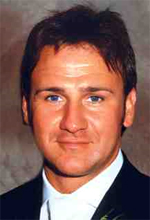
Laurance Donnelly* reflects on how the field of Forensic Geoscience has developed since his first articles in Geoscientist and European Geologist, six years ago. Report and interview by Sarah Day.
Geoscientist 19.1 January 2009
Sherlock Holmes could be regarded as the very first forensic geologist. Frequently, he amazed his fictional audience with his impressive ability to deduce facts from the smallest traces of mud, clay, or other materials found at a crime scene or on a person’s clothing. Despite such early recognition of the useful role geologists could play in the investigation of crime, academic and practitioners interests in Geoforensics is a relatively recent development.
‘Geoforensics is a specialist branch of geology that is concerned with the application of geological science to criminal investigations of what happened, where, and when it occurred, and how and why it took place’ Donnelly explains. These criminal investigations can cover a wide variety of areas, from domestic crimes to international terrorism. Geoforensics can be broadly divided into two areas of specialism. The first of these, familiar to any Sherlock Holmes devotee, is the collection, analysis, interpretation, presentation and explanation of physical evidence from a crime scene such as soils, rocks, microfossils or manmade materials. These can be used to determine the location of a crime, or to link the offender to the crime scene or victim. Secondly, a field based geoscientist can use their skill in the geological and geomorphological mapping and exploration of the Earth’s surface to help the police search for items buried or concealed under the ground.
Donnelly has been applying his knowledge and training in applied geology to criminal investigations for the past 14 years, and has conducted numerous searches and advised the police on searches throughout the UK, USA, Australia and Europe. He began this work in 1994. ‘At this time’, he explains, ‘geologists rarely formally supported police investigations, apart from a few occasional instances where soil, rock or manmade materials on clothing were analysed’. There were no formal courses or research which specifically focused on Geoforensics.
‘Traditionally’, he says, ‘police searches have relied on conventional line searches, trial and error excavations, and the use of police (cadaver) dogs’. According to Donnelly, the turning point was the 1984 IRA attack on the British cabinet in Brighton. Afterwards, police worked in close collaboration with the military to become familiarised with military search methods. Geoscientists, over the past decade have significantly improved the police search capability by introducing new and innovative geological and geophysical techniques to the science and art of ‘searching’. ‘One of the most valuable assets a geologist can provide to a police officer is a conceptual understanding of the geology of a crime scene or search area in the early stages of a search says Donnelly. ‘The evolution of this geological model, as the investigation proceeds, will determine the search philosophy, strategy, methods and choice of search assets, in association with the strict police search protocols’ and existing police search techniques
In 2002, Donnelly was invited to Westminster Palace to give a presentation on Geoforensics as part of the All-Party Parliamentary Group for Earth Science. The presentation drew much-needed attention to the potential role geologists could play in criminal investigations, and in 2004 the Geological Society held its first meeting on Geoforensics. This increased interest in the subject led to the formation of the Forensic Geoscience Group in 2006, which held its first meeting at Burlington House on 20 December, chaired and founded by Dr Donnelly.
‘The aims of the Forensic Geoscience Group are: to advance the study and understanding of Forensic Geoscience by creating a network and framework of geoscientists, to review and share knowledge, to develop inter-disciplinary collaboration, best-practice, and to disseminate information.’ The group has brought together forensic geoscientists from academia, industry, government, police and the military, both nationally and internationally. Regular meetings, conferences, seminars, workshops and field visits are held, where members can share information, case histories and experiences, as well as collaborate with related specialist groups.
There are now over 120 courses in the UK which feature ‘forensic’ in their title, and Geoforensic research is now established in a number of British universities. Since 2002, there have been at least seven international meetings on forensics and geosciences, and the publication of many papers and six books on the subject. ‘Together’, Donnelly states, ‘these demonstrate the wealth in activity in Geoforensics worldwide, within and beyond the classical association with police investigations’.
From the first forensic geologist, whose knowledge of geology was described by Dr Watson as ‘practical, but limited’, the field of Geoforensics has come a long way. Now, British geoscientists are formally recognised nationally and internationally as providers of specialist services in forensic geology. As Professor Mark Harrison, MBE, a serving police officer working with the National Policing Improvement Agency and the UK National Search Advisor, has stated, ‘Geoforensics has been in a void but is now an emerging discipline that can bring significant benefits to policing’.
*Chair, Geological Society of London Forensic Geoscience Group. Halcrow Group Limited.